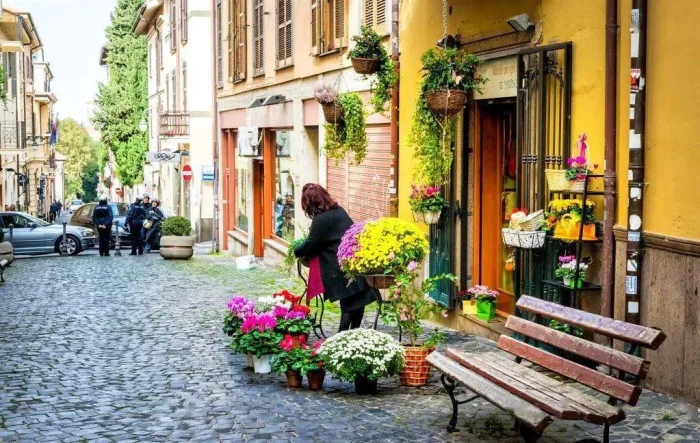Immigration to ItalyMany people think it's as simple as "visa + landing", but in reality it's a long process involving language, law, administrative approvals and cultural integration.
To stop you from getting sidetracked by trivial procedures, this article will give you theA one-stop shop for the entire process from immigration to naturalizationWhether you're ready toimmigrants, or already settled in Italy, this guide is worth bookmarking.
I. Language requirements: one of the thresholds for naturalization, but not a hard indicator of the starting point of immigration
Many people worry that they can't start immigrating if they don't speak Italian. In fact.The language requirement occurs mainly at the "permanent residence" and "naturalization" stages.There is no mandatory language threshold for the initial application for a residence card.
-
If the applicationLong-term residence in Italy (after 5 years)The course is designed for students who have passed the Italian A2 level test, which covers the basics of listening, speaking, reading and writing.
-
Higher language requirements for naturalizationThe average person needs to reach B1 (equivalent to being able to communicate in everyday work and life).
✅ Recommendation:
-
Initial immigrants may first attendFree language classes supported by the municipalityThe
-
Early planning for participation is recommended if you intend to stay for a long time or become a naturalized citizen.Official exams such as CELI or CILSThe
II. Residence card application process: the first step towards legal settlement
The Italian residence permit (Permesso di soggiorno) is the basis for legal residence for all non-EU residents. Different visa categories correspond to different types of residence cards, and the following are the most common application routes:
Step 1: Entering the country with a visa
post-entryApplication packages for residence permits must be submitted at the immigration office or post office within 8 days (kit)If you are late, your legal status will be affected.
Step 2: Submission of information
The following materials are usually required:
-
Copy of valid passport and visa pages
-
Tax code (Codice Fiscale)
-
Housing lease or reception certificate
-
Work contract or proof of enrollment
-
Post office application receipt + Marca da bollo stamp (16€)
Step 3: Fingerprinting + Waiting for Approval
The Immigration Department will issue a notice to take fingerprints, after which you will enter the approval period, which usually ranges from 2 to 6 months. Eventually you will get a plastic residence card with a photo.
📌 Notes:
-
Residence cards are available.validity periodof the visa will need to be renewed periodically depending on the type of visa.
-
Without a legal residence card, it is not possible to register an address, get a bank card, go to school or buy insurance.
III. Application for long-term residence in Italy (Carta di Soggiorno)
After five years of holding an ordinary residence permit, those who meet the conditions can apply for a long-term residence card (commonly known as the "EU Blue Card"), which will not be renewed annually and will provide a more stable status.
Conditions include:
-
5 years of continuous legal residence
-
possessionstable income(e.g. work, pensions, self-employment)
-
Passed the Italian A2 language test
-
No significant criminal record
-
Have a legal address
✅ Long-term residence holders can:
-
Freedom of movement to and from parts of the European Union
-
Enrollment in additional social benefits (e.g., family allowances)
-
More stable educational resources for children

IV. The Italian naturalization process: the end of the road to becoming a real "Italian".
After obtaining a permanent residence card, many people move on to "naturalization in Italy", but this process is much longer and stricter.
Naturalization conditions (for non-EU residents):
-
10 years of legal residence in Italy
-
Have a stable financial source
-
Language level B1 with official certification
-
No serious criminal record
-
Strong demonstration of social integration (e.g., children attending public schools, paying taxes over time, etc.)
Naturalization Application Process:
-
Submit an online application on the website of the Italian Ministry of the Interior

-
Upload scanned copies of all materials
-
Payment of related expenses
-
Waiting to be heard (about 2 to 4 years, depending on the city)
Once the application is approved, you will be notified of your naturalization and will be required to take the oath of Italian citizenship at the local city hall.
📌 Tip:
After naturalization, you can apply for an Italian passport, which allows you to enter and leave more than 180 countries around the world, and can be passed on to the next generation.
V. Common misconceptions and reminders:
-
Myth 1: It is assumed that buying a house is the only way to immigrate directly. In fact, Italy does not have a policy of "buying a house to obtain status", and the purchase of a house is only an auxiliary material.
-
Myth 2: The residence card can be renewed once it has expired. In practice, there is a risk of fines or deportation if the card is overstayed.
-
Myth 3: Naturalization necessitates the renunciation of the original nationality. Italy recognizes dual citizenship, while Chinese law does not currently recognize dual citizenship, so careful assessment is required.
Conclusion:
Immigration to ItalyIt is not a quick fix, but the path is clear and the process is transparent. As long as you plan ahead, comply with the rules and gradually integrate into the local community, fromResidence card to permanent residence to naturalizationEvery step of the way, we are paving the way for a freer, more dignified life possible for you and your family.
Immigration is not an escape, but a journey about choices and growth. And Italy may be just the country for you to put down roots.






